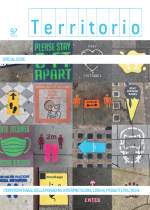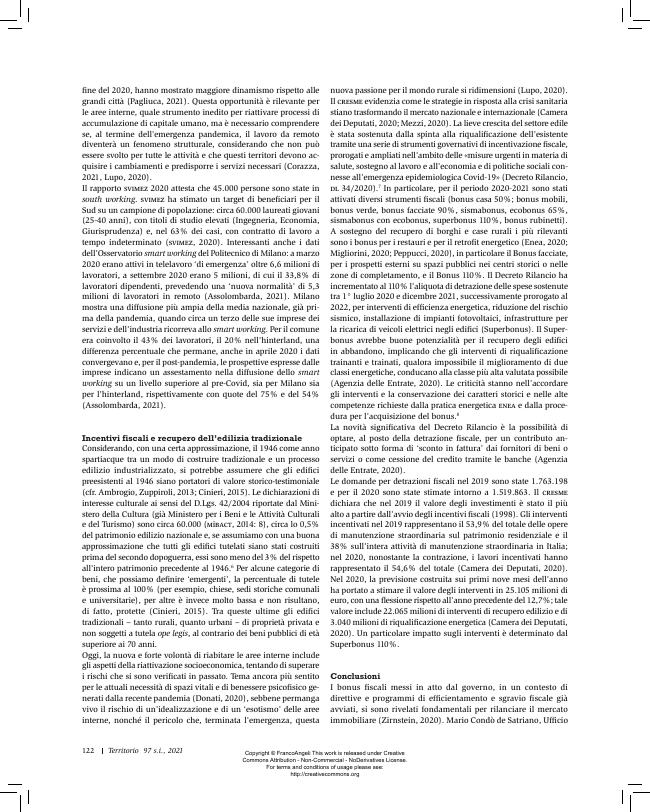Emergenza sanitaria ed edilizia : una possibile opportunità per riabitare i piccoli centri
P. 119-124
Negli ultimi decenni, l'intervento sugli edifici esistenti ha registrato sempre maggior interesse coinvolgendo il costruito diffuso, parte integrante del tessuto urbano delle città come dei centri abitati minori. Il contributo illustra le necessità di adeguamento degli edifici storici a fronte dell'attenzione verso le aree rurali e marginali emersa oggi maggiormente con la pandemia Covid-19. In evidenza è il rapporto tra il processo di efficientamento energetico, le esigenze di conservazione e l'adeguamento d'uso e gestione del patrimonio costruito. Questa riflessione prende in considerazione l'evoluzione del mercato immobiliare analizzando gli strumenti normativi in tema di retrofit energetico e le strategie di agevolazione fiscale in risposta all'attuale situazione di crisi. [Testo dell'editore]
In recent decades, the intervention on existing buildings has recorded increasing interest, involving widespread construction, an integral part of the urban fabric of cities as well as smaller towns. The contribution illustrates the need to adapt historic buildings in the face of attention to rural and marginal areas that have emerged most today with the Covid-19 pandemic. The relationship between the energy efficiency process, the conservation needs, and the adaptation of use and management of the built heritage is highlighted. This reflection considers the evolution of the real estate market by analyzing the regulatory tools on energy retrofit and fiscal strategies in response to the current crisis. [Publisher's text]
Ist Teil von
Territorio : 97, 2, supplemento, 2021-
Artikel aus derselben Ausgabe (einzeln erhältlich)
-
Informationen



